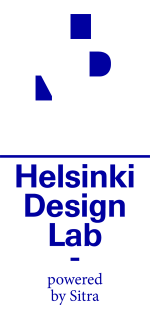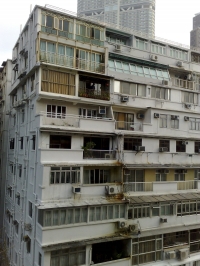All posts tagged Travels
In the interest of being consistent, I'm checking in with another weeknote even though it's late and I'm tired. Very tired.
This week began in Santiago with Justin and I visiting the Ministry of Housing as well as some other key partners for Elemental. I'm getting more used to having these sorts of conversations inside the halls of government, but for the moment it's still a learning process. We're calibrating the conversation to the audience and getting better at articulating the specific contributions that design has to offer. It feels like an important thing to be figuring out.
Thanks to the international dateline we didn't have a Tuesday. For that matter, thanks to jetlag between Santiago and Sydney, Wednesday was pretty much a waste as well, with the notable exception of a great dinner with Dan Hill of Arup Sydney. We covered everything from urban informatics to fruit bats.
We spent two days with Second Road, digging into their archives and meeting some of their past collaborators and clients, to understand more about the work that they've done with the Australian Taxation Office. It was truly impressive to see the extent to which the ethos of design has seeped into that organization. How many tax offices in the world recruit designers every year? Now we know of at least one!
Among other activities in Helsinki, Adriel spent most of Thursday in an old-folks home learning about what it takes to care for the elderly. Meanwhile Ezra was making visits to Helsinki Police, the Finnish Military, and the Ministry of Education... I know, right?
Over the weekend Justin and I had the pleasure of participating in the Swinburne University Design Thinking conference in Torquay, Australia hosted by the dean of the design faculty, Ken Friedman. It was encouraging to hear the diversity of the conversation and in particular to discover that we're not the only ones who are a bit uncomfortable with the term "design thinking." What about doing? What is design without making? As we increase our appreciation for design as a way of understanding problems let's not forget that design is always obliged to act. This is precisely what we are concerned with at Helsinki Design Lab: how do we best think and do, conceive and act.
One week and eight thousand kilometers later, Justin and I are in Santiago de Chile where we've been the guests of Elemental as we learn about this incredibly unique and exciting project. Elemental is a "do tank" that started as a relatively modest project with the goal of providing new housing to upgrade a portion of the slums in Iquique, Chile. Fast forward to today and Elemental is actively working on projects in multiple countries and expanding from a laser focus on housing to the larger challenge of using "the city as a shortcut to equality."

Santiago de Chile as seen from the offices of Elemental.
When we talk about strategic design, there are few people who fit the description better than the team at Elemental. By leaning on expertise from areas such as law, traffic engineering, community organization, economics, and sociology the designers at Elemental are working to develop systemic change within the interlinked problem space of the city. Building new homes for slum dwellers is one thing, but explicitly designing those houses as a tool to bootstrap the owners out of poverty demonstrates an important reframing of the problem, required dedicated follow through, and has delivered much more meaningful and valuable results.
After visiting two of Elemental's projects and speaking with many of the team members my brain is a little saturated. I've been culling through notes and trying to make room for our meetings with the Minister of Housing and the former CEO of Copec, both early sponsors for the Elemental work. Tomorrow is a full day and then we're off to Australia. And yes, this month is heavy on the travel. That's why we support the Carbon Fund.
One thing we heard this week in Chile that echoes previous conversations in many different places: people want to hire design services, they believe in design services, but their procurement systems don't allow it. How do you buy something when your procurement system has no check box for it? How do you invest in a process when you're used to buying products? This is going to be a recurring theme.
By now Adriel and Ezra should be landing in Finland where they each have a busy week of fieldwork for the studio briefs. Our session last Monday was intense but great. One of those moments where a lot of swirling thoughts become more clear – still cloudy, but we're developing a nephology to describe them. The Breslin was kind enough to lend us their mezzanine for a half day meeting. Those people make a mean breakfast.
Speaking of hotels, Minna has been securing hotel rooms for us in Helsinki. Checking these bits of logistics off the list is ever so satisfying.
Slowly we're exploring the viability of the HDLT, a project which we'll share more about when there's something solid to share. Marco has begun due diligence on this in anticipation of first discussions with some key partners next month. He's also lining up some key people for HDL 2010, including our first confirmed studio designer. We're waiting to hear back from another key invite – a speaker for HDL 2010 that would make me pleased as punch to have on board.
As I write this, the lobby here at the ACE hotel in New York is a raucous hive and I'm happy to be tucked into a small but comfortable room upstairs. Justin and I have come to NYC as the second stop on a three week trip that will cover six cities on five continents. This trip is largely about meeting strategic designers around the world and to see their work in context. It's about finding champion projects that make the endeavor of strategic design tangible and accessible to a broader audience.
On Wednesday we met up in London to visit the Helen Hamlyn Centre where Maja and Rama gave us an in-depth introduction to the work they have been doing with DePuy. It was a great way to start the research and it's going to be interesting as we gain a more complete understanding of the project by meeting their clients and other groups who were touched by the design work. One thing is definitely clear: the importance of having a client who advocates for design is immeasurably large.
We also had the chance to drop by live|work and hear about some of their projects, particularly Make It Work done for the Sunderland City Council. With a large population of long term unemployed people in Sunderland live|work were asked to help develop a system that would bring inactivity rates down. By coordinating among the 280+ organizations that already offer services to unemployed and in-need populations, their solution helps match the right kind of support to the needs of the right individual which increases results and decreases costs due to wasted or ineffectual services. This video gives a nice introduction but there's certainly a lot more to dig in to.
Marco made a day trip to London for an interview with a great magazine which we are very excited about, so we took the opportunity to spend a solid five hours taking stock of the past month and planning for the next few ahead of us. These day-long meetings seem to work better the further they are from the office, but I suspect that mostly has to do with the fact that your calendar is marked out-of-office and thus a clutter of meeting invites is avoided. We've been having stock-taking meetings every couple months and it's working well for us as significant markers between which weekly and daily coordination fits in. Set the strategy, adjust regularly.
Despite the fact that it was absolutely gorgeous in New York today Adriel, Ezra, Justin, and I spent the day locked in a conference room hashing out developments in the content of the studio briefs. There are lots of ideas flowing and we're starting to narrow in on some critical dimensions that will bracket each one of the studios. The difficulty in this sort of situation is to strike the right balance between providing a stable enough frame that the studio participants have something to react to, while maintaining enough flexibility that the framework will be durable. We're getting there.
This week: more, more, more. Meetings with friends old and new; a full day of conversation with the Jonathan Rose Companies about their holistic approach to development; a kickoff meeting with the talented people of XOXCO, who are going to be developing the new HDL website; and then heading to the airport and on to South America.
There are few places that could serve as a better platform for a discussion about architecture and the city than the roof of a skyscraper, smack in the center of Los Angeles. Last week Postopolis! LA convened a group of more than 40+ speakers for five days of near-constant conversation. I was pleased to be able to participate by sharing the story of Helsinki Design Lab 1968, a bit about where we're going with HDL 2010, and to introduce the Low2No competition that Sitra recently launched.

Photo from Storefront for Art & Architecture on Flickr.
It was great to see some old friends and meet many new ones, but I particularly want to highlight the way that Postopolis! LA came to be. On this blog we've been describing different kinds of innovation, and Postopolis! is no exception. Unlike most events which have a central organizer, Postopolis! was hosted by six bloggers from five different cities, all enabled and made fluid through online collaboration tools. Think about that for a minute. The images and ideas from Eric Rodenbeck's presentation about data visualization, Benjamin Ball's design by process, and Ben Cerveny's thought-wander through the territory of the city as operating system will be playing on repeat in my head for a long while, but the quiet triumph of Postopolis! LA was its own formatting – the very nature of the event as a unique collaboration might just be the most impressive part of all. (This may mean we have too much event-planning on the brain...)
Now that we're all back to Helsinki to rest up and let these experiences soak in, this blog will probably be a bit slow for a while. In the mean time, you can browse the Twitter stream from Postopolis for extensive notes, excerpts, and the occasional dérive.
Is political protest a relic of the 20th century? In a way, this is the question that The Hope Institute asks here in Seoul. As a non-profit that runs a number of different advocacy and education programs, the Hope Institute proposes that "social invention" can replace protest as an effective tool for improving the quality of daily life. Over the past two years they've collected more than 16,000 ideas and are actively prototyping some of them.
In some of their most interesting work the Hope Institute uses crowdsourcing to collect ideas that can improve various aspects of living in Korea, from tweaks to the Metro system to alternate farming practices. After collecting advice from the people on the ground, Hope Institute brings together various stakeholders (be they government, business, or other communities) to join in one conversation about the problem at hand and then prototypes solutions and publishes their findings.

Photo from Arne Hendriks on Flickr.
One ambitious project they're working on is to change the visual experience of Korea's busy streets. With little regulation applying to the way that signs and advertisements are applied to building facades, the streets can quickly become a cacophony of sales pitches. Hope Institute's "Sign is Design" program hosts the municipal offices in charge of signage, the sign owners, and the sign designers in a single conversation so that all parties can work together to find a more orderly and pleasing way to deal with signage. Recently they adopted one of the rundown streets in Busan's old city center and applied their process to redo the all of the signs. If this were all for the sake of a more beautiful street we could note its improvement briefly, but post-renovation shop owners have noted that foot traffic and sales are both up. This increase in business is the direct outcome of good design being applied to a problem at all levels, from the strategy of bringing together all the stakeholders down to the graphic design of the individual signs.
If you speak Korean you may enjoy watching this presentation by Hong Ilpyo from LIFT ASIA '08, Research Fellow at the Hope Institute, where he talks about more of Hope Institute's work. The Q&A is in English and starts about 15 minutes in.
From the top of the ArcoTower in Anyang, a town in the southern reaches of the Seoul metropolitan area, it was quite clear what happens when a functionalist approach is taken to urban design: you get a city comprised of rubber stamp blocks, each the result of some generic equation optimized for things like "habitation units" and traffic flows. Top down planning can be quite efficient and was an important tool in South Korea's rapid urbanization in the latter half of the 20th century, but while growth rates may change quickly, concrete stays put much longer. In other words, buildings and cities planned with only the near future in mind may be immediate successes, but can quickly morph into liabilities when looked at over the span of multiple generations.

Photo: Anyang, South Korea photographed by Yong27 on Flickr.
Mr. Ohn Yeong-Te, President of the Architectue & Urban Research Institute (AURI), crystalized the problem that architects face when trying to improve the quality of the built environment by stating that designers are responsible to three parties: the people who live their daily lives in and around buildings, the businesses which rely on the smooth function of the city and its structures to ply their trade, and broader society which deserves high quality architecture that may become "tomorrow's cultural heritage." These different levels of responsibility relate to various strata of decision making from the grass roots all the way up to national policy. Without a perspective that incorporates design input at all levels of decision making it's very difficult to deliver high quality buildings.
This eloquent description of a need for planning that is integrated and informed from top to bottom was further expanded upon by Cho Sang-Kyu, Manager of AURI's Architecture and Urban Information Center, who described the need for architects to collaborate horizontally across disciplines. As society puts increasing demands on our buildings (it must be green! it should sustain itself financially!) the architect finds that they must work directly with other disciplines to deliver the informed perspective that is required of them.
Although AURI's work is at the national level (they report to the Parliament of South Korea), Anyang was the perfect place for this discussion about the potential of design-informed decision to result in high quality spaces. With iniatives like the Anyang Public Art Project, the city itself is actively looking for solutions to the rubber-stamp urbanism they've inheretied from the mass-production past.
Later in the day, a visit to the buzzing offices of Cho Minsuk, Principal of Mass Studies, provided some context to the discussion at AURI. Where are the precedents for this kind of integrated thinking amongst the community of designers? I'll sign off now with this as an open question to you: Which architects and designers are finding clever ways to insert themselves into these larger questions? Who do you look to for role models in this area?
On our last day of meetings in Bangalore, we had the pleasure to visit Srishti School of Art, Design, and Technology where Geetha Narayanan shared with us a bit of the history of her ground-breaking school and some of the opportunities and challenges facing educators working in India today. Geetha and her team have built a wonderful momentum within their school which has grown from an inaugural class of one single student in 1996 to an enrollment of over 250 today.
A theme that comes up again and again as we visit educators in different countries is the need for designers to be better trained to operate outside the bubble of art and design. It was great to hear Geetha flesh out the term "design education" beyond the training of designers to include something akin to the concept of the embedded designer I described previously. With the collaborative, studio-style approach gaining popularity in all levels of education from primary up through grad school, it's exciting to note that these students are learning new ways to think about and see the world in addition to the content of their various subjects.
To imagine that a pedagogy which uses design to helps students better understand the world could be taking root in one of the planet's most populous countries is an exciting proposition indeed. Being here for a few days has given us time to get only the smallest peek into life in India, but it was enough time to clarify how great the opportunities are for even the smallest of innovations in a place as vast, populous, and talent-filled as this.
I’m on my way to a meeting, so forgive me for the haste with which I jot down the start of an idea (I’ll expand later, but this is too important to start later).
We had an inspirational morning in Bangalore today. One of them was with Poonam Bir Kasturi and her team at the Daily Dump project. This is an amazing project driven by a critical issue: Sustainability. While the term is growing with “cult-like” popularity, most of the airtime being given is from a 30,000 feet perspective. Poonam’s team is deeply rooted in the complexity of the problem as it confronts daily life. The focus is on waste, tackling it from a composting perspective through a systematic design approach that is rooted in meaning, culture and economic realities. This is not a “deep dive” into the problem, but rather a powerful example of how design is being applied to create real social innovation by re-designing its value chain (sorry, I hate this business term, but you get what I mean).
Over a wonderful lunch, we discussed many issues primarily focusing on design innovation, the team’s “subversive” way of redefining problem boundaries, and culture…. seems like our discussions, almost without exception, end with the question of culture.
I have many thoughts racing through my mind as I realize my growing skepticism for what I would call “board room innovation”. Back on this topic and Poonam’s work shortly…
Hong Kong is a great window onto the future…..and yesterday we caught a glimpse of it courtesy of Lorraine Justice, Martin Smith, and Babette Strausse. As Bryan mentioned one of the topics we converged on was Design Education. I think that at the end of the day, design’s greatest value proposition is in its education.
It has always been with great dismay that I have had to acknowledge how little we invest in the art of teaching this most valuable asset. My first experience teaching (which is just about universal with anyone who has taught) is that I was simply thrown into the classroom and expected to swim. After all if one designs, one must know how to teach it, right? Well, try again… not really (actually far from it)….. So it was wonderfully refreshing to hear Lorraine and Marty talk about their investment into the art of teaching (take a look at the Design School’s Education program- I think this is very visionary work). And Lorraine, you have to write about your insights on this topic!
But how much of an audience is there for design education? Well we have the professions we serve, the growing businesses community that is awakening to design.…. and more fundamentally, a growing base of decision makers who need better strategic tools to confront an ever growing complex world. This is all on top of an exploding developing market of design education. Lorraine spoke with great clarity and vision about our changing global landscape, and the reality is shocking. Here’s a fact I’ll leave unanswered: guess how many new design schools are emerging in China? And it does not end there…. the thirst for the innovation process called design is insatiable, and well… you can see how that puts a critical lens on the design question of “how do we prepare those who teach design to be effective?”
Our education discussion posed another interesting question (its late so I’ll leave this one unanswered too): given the same innovation process, will all cultures innovate the same way? What kinds of cultures will spur what kind of innovation?
I think the challenge for countries that are homogenous, obedient, consensus driven, highly structured, and/or risk adverse (this describes Finland in many ways) is that the environment may color the kind of innovation that can be leveraged. A process alone is not enough. China’s culture will shape the kind of innovation it will prepare its students for… my guess would be that it will prepare great incremental innovators, but will have a hard time with those innovations that need a higher level of re-thinking, critique, and counter-culture perspective. Finland too, will have an innovation challenge. While it has the right ecosystem for innovation, its challenge will be to create the right conditions for thinking differently in a consensus driven culture.
Today we stopped by The Hong Kong Polytechnic University School of Design to see for ourselves how design education is being thought of in this part of the world. Dean Lorraine Justice along with Professor Martin Smith (both at HDL 2008) talked about the need to educate designers as teachers. Many trained designers find themselves teaching studio at one point or another, but what training do we have to write curriculum or even shape well-crafted exercises? Naturally one is armed with the implicit techniques and ideas that they pick up through their own schooling, but teaching is its own art and teaching design is particularly special. To address this issue HKPU will be offering a new Masters of Design (Design Education) in the fall, along with new degrees in Design Strategies, Design Practices, and Interaction Design.
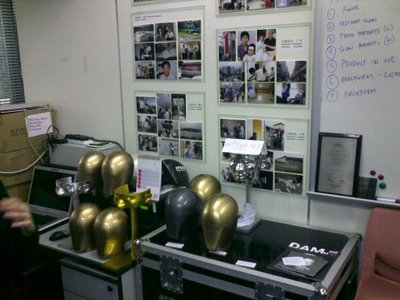
There are too many things to mention, but while taking a tour of HPKU with Babbette Strousse (HDL 2008) we quickly got to see a unique research project. Size China's proposition is simple: all product designers use human factors information at some point. Why rely on the same old Measure of Man and Woman when different ethic backgrounds, ages, and body types each have their own physical characteristics?
Researchers here have scanned upwards of 2000 people from six major regions of China to produce a sort of virtual reference model for Chinese head types. Captured with a 3D scanner, these data points may be aggregated and averaged to produce a more accurate reference point for the design of bodily products. Companies spend millions of dollars on segmenting their customers into target markets, why not apply this same intelligence to the design of physical objects and provide local or regional solutions to global problems?
Today Marco and I zipped around Singapore under the able guidance of Cecilia Chua of The Idea Factory (thanks, Cecilia!). In three separate cases we met with people who are working to bring the process of design to deep problems in three different contexts: national policy, patient care, and primary education.
How many countries have a government office for design? We visited Dr. Milton Tan who runs the DesignSingapore Council to learn more about the sorts of initiatives they are working on at the Ministry of Information, Communication, and The Arts and to get a glimpse into how design is promoted inside Singapore. The popular industrial design congress, ICSID, will be held in Singapore this year and DesignSingapore Council has some interesting ideas already cooking.

Fruit vending machine in the halls of Alexandra Hospital
From top down to bottom up, we left Design Singapore and headed directly to Alexandra Hospital where CEO Liak Teng Lit is radically re-thinking hospitalness. A serious convert to The Toyota Way, Liak is committed to considering every tiny detail of the hospital as a patient experience. In the course of our brief time with him, Liak was refering to botany, hotel design, airplane seats, call centers, and more... all as models of thinking about his problems in the hospital. His tweaking of the hospital ranges from wayfinding that makes it easier for families to identify who is caring to their loved ones, to new pricing models for the cafeteria that encourages healthier eating (vegetables: $.20; meat: $1). What's more, Liak is a numbers guy so he's backing up these micro innovations with statistics that underscore their impact.
Cecilia really planned a busy day for us, so after leaving the hospital we stopped briefly at Pasir Ris Primary School where the students were working with their teachers on a "co-design" exercise. Essentially, this was a sort of curated crowd-sourcing where the students were asked to generate ideas around a given topic while the teachers acted as facilitators. This is not such an unfamiliar story, but this particular school has a track record of producing new ideas and even products in house and successfully exporting them to other schools in Singapore. Twelve year old students conceptualizing, writing, and illustrating books that are now in active use at other schools? Sounds like a success story to me.
Tomorrow: Hong Kong!
One of the things I did today was spent some real quality time with Jan Wahlberg, Minister Counsellor at the Finnish Embassy in Tokyo discussing Japan, its culture, and questions of design and national competitiveness. Despite being in a world of new characters, I’m surprised by how accessible Tokyo is.
There are few cultures that have engrained design as deeply and to such a high degree than the Japanese. It’s hard not to notice that everything you touch and see has been carefully planned and developed: shapes; colors; packaging; food; buttons; gadgets; signs; and tickets. And it does not stop there, rather it permeates to all aspects of culture and behavior. There is an astounding sense of coherence, of one voice. It would be simplistic to suggest that the Japanese are somehow born with a more acute sense of the aesthetic; that they possess a unique “design” gene. Rather, this coherence and refinement is a reflection of its culture.
Finland is not dissimilar in certain regards, especially when it comes to the “one voice”. Finland is a small country (this -actually- being the biggest difference with Japan), with a high degree of literacy, and a very homogenous culture. Decision making in this context is, relatively speaking, easy. I think this is something that we will want to leverage at our next Helsinki Design Lab. It will enable us to prototype ideas that require systemic change.
But I’m also wondering how much of a liability can this “one voice” be. In this context there tends to be less need for discussion; fewer points of contention; less angles on an issue… so the danger is that rather than expand, the collective understanding contracts. This in turn may limit the ability to find the space for innovation, to think and see differently. So how does a national innovation strategy in a “one voice” context differ from that in other contexts?
In the past few years, groups of people without a direct connection to the practice of design have grown increasingly fond of the word. Business Week even ranked Harvard as one of the top design design schools in the country. Not the Graduate School of Design as you may expect but HBS, Harvard Business School. Huh?!?!
Referred to by some as "Design Thinking," or more broadly as "innovation," this is a way to describe the synthetic, visual, and iterative approach to problem solving that any practicing designer has drilled into their skull during their professional training. If this way of thinking is gaining currency among non-designers, that’s because it is truly useful for any number of situations beyond the design of beautiful widgets and functional gizmos.
The converse is also important: if on the one hand the design community lends a hint of its thought process to newcomers in the form of "design thinking," then designers must also seek opportunities to take root within unfamiliar organizations and situations. You could call this the "embedded designer," one who brings the full mélange of visualization, problem solving, and prototyping expertise to bear on problems of process, strategy, and decision making from deep within a host organization.
It should be no surprise that this notion of the "embedded designer" appeals to me since it more or less describes the job I've been asked to perform here at Sitra. As a Design Lead in the Strategic Design Unit I lend the eye (and brain!) of a designer to a range of in-house issues, from refreshing our branding to the more nebulous question of how we foster a strong relationship with designers worldwide.
With the professional training of an architect and a previous background in software design and development, my experience runs the gamut from the shaping of physical objects to the design of abstract interactions. The ability to touch many points along this spectrum is part of what excites me about working at Sitra.
As our plans for HDL 2010 develop I look forward to further articulating the potentials of the "embedded designer" as a way of bringing the important skills and ethos of the design community to questions of decision making in business and government. As Marco has already mentioned, "design" seems to mean something different to each person who utters it. To rescue the term from a slow death as jargon we need to find ways for the design community to engage outsiders while championing our expertise as something deep and specific – design is broader than what you can pick up during a few courses in an MBA program. Thinking like a designer is certainly useful, but the great value proposition of design has always been in the nexus of thinking and doing. If we're successful, this is the spirit that HDL 2010 will foster.
What is a Milan tram doing in San Francisco? Well the simple answer is that they bought & brought it over. But the more fundamental question is one of identity: how could such an iconic American city have such an iconic Italian tram? Can two distinct national identities coexist?
One way design has been leveraged is as a differentiating tool. First to shape products, then to shape brands, and - in the best cases - ultimately leveraged to shape national identities. We do have, after all, distinct expectation about German, Italian or Scandinavian design. Each one conjures up a specific value system, a way of living… an ideology. I have friends from all corners of the world who have a more “Italian” temperament, or a more “Scandinavian” attitude.
Today, ideas, people, and opportunities move and mix at unprecedented rates. In this global world San Francisco may more in common with Milan than it has with Nebraska or rural West Virginia. As I prepare to head out to Tokyo today I am left wondering if the differences in the world outweigh their similarities. Will national boundaries continue to define the boundaries of competiveness? If not, what is the role of national innovation policies and of design as “differentiator”?
Innovation during these hard economic times is not for the weak. Sure, it has become a popular term, but few understand it better than Darrel Rhea, CEO of Cheskin. For one simple reason: Darrel does not just talk and sell innovation, he actually walks the talk. He actually knows how to innovate, and he has a track record that would make most of our jaws drop. But what does “innovation” look like during these hard times?
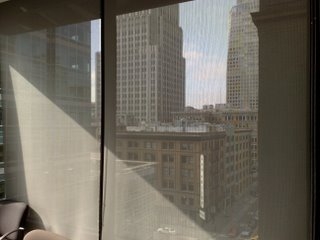
Darrel and I spent the afternoon today in San Francisco, talking about design and the changing “innovation” landscape. It’s clear that companies are panicking, and with panic comes a nervousness and antsyness for immediate results. The appetite for the upfront investment, and the calm and focused mindset necessary to carry it out… well that seems to be all but gone. I think we should hand over our businesses to firemen. I’ve never seen anyone more calm and collected, than a fireman dealing with an emergency. Staying focused helps you make better decisions. Isn’t innovation about getting you to a better place? About making better decision? While I understand that companies are scrambling for cash, it seems foolish that they jettison their calm during the time that they need it the most.
So what will be the effect of the stimulus package on innovation? While undoubtedly it will help stimulate opportunities we also need to be mindful not to throw too much and expect that it will resolve our problems. In some places cash helps, in others it’s like fuel to a fire. There is no better way to kill early innovations than by throwing too much at it. What works in a small, informal setting will get obliterated when expectations grow too fast and too much; when there is more organization that content. It’s like overwatering a seedling. I’m starting to think that the stimulus package really needs a designer…..
On Tuesday, Obama spoke about the budget. He outlined its central role in redefining areas critical for the US’s future competitiveness: Education; Healthcare; and Energy. While these issue all have tangible, measurable daily meaning to us, the term “budget” is rather abstract. A budget is no more than the overall organization of expenditure, or is it?
Today I met with David of the Institute for Responsible Investment and we had a very interesting discussion. I find it fascinating to delve into the intersection between financial issues and social values. In addition to the traditional argument of competitiveness, Obama’s speech had strong threads regarding the need to “do good”. But what is – in a broader sense- the connection between expenditure and social good? How can we see that these resources are organized, injected, and accounted for in ways that help promote broader social values? How does a corporation that wants to “do good” in terms of sustainability see and measure its ROI in these terms? These are multidimensional, complex issues that will require synthesis.
In all of this the question of how, and what, you measure will be critical. What will our “next generation” indicators look like? I think design has a role in shaping many of these questions.
We had a great time in London getting to know the brilliant people from the Helen Hamlyn Centre. Marco already introduced you to the ideas they showed us. The low-cost surgical tools are pretty groundbreaking, so I encourage you to take a look!
For me personally the most interesting discussion on this trip was about the obstacles designers face when working with experts from other fields. The general impression of design still seems to be limited to “object-related” issues. The connection between well designed things (objects) and a working society, are rarely thought of (at least this is my own conception…). So the problem using these methods is not about the difficulty of finding good solutions, it is the difficulty of finding the people who are open to include design and designers in solving these real issues. One goal of HDL 2010 will be to use it as a means to provide government and private sector representatives positive experiences when working in close collaboration with designers. Once they see, they will believe.
Today I spent time with the research team at the Helen Hamlyn Centre in London. Stunning work looking at applying design to bring innovation in healthcare (one of many areas of focus): Maya gave us an overview of their low cost disposable surgical tools; Johnny talked about their resus-station; Sally showed the graphic design of injectable medicines; Rob walked me through their Smartpods. All stellar work, well worth a study!
While the tangible outputs of their work were great design solutions, the real jewel is the process. Much of our discussion focused on an innovation cycle that does not stop at concepts, but pushes it beyond to implementation. When we talk about healthcare getting all the right stakeholders, identifying key champions, finding the right funding (money, after all, does not come without strings attached!), framing the problem productively, keeping focus, having the right stewardship…. well, it’s not easy. And it does not happen overnight. But this is a design process that enables the design solution to shine.
The great challenge today is not so much great ideas, but implementing great ideas. In an age where risk is a risky proposition, being able to demonstrate that a new way of framing problems (through design) leads to better solutions is critical. But without an innovation process that spans the continuum of inception to implementation it’s hard to make the ROI argument…. because there is no return!
Design is perhaps best described as “pattern recognition”. Today I met with Zary and his colleagues at Wireless@KTH in Stockholm. At lunch we talked about the barriers to innovation in the wireless sector and suddenly I caught onto a pattern. Many design communities define the “consumer” differently as they have diverse cycles of innovation… it’s not rocket science, but sometimes it’s the small revelations that help make our world a little more coherent.
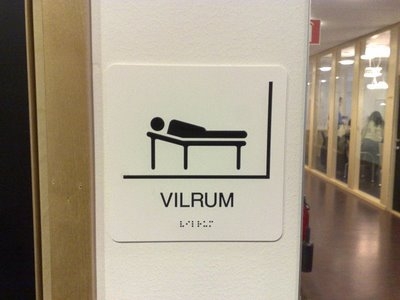
The “consumer” question gets a different answer depending on who you ask. In the product world you do consumer research, figure out what people want, and then design for that need. In architecture, who knows who the consumer will be 50 years from now? And if it’s a public building, by nature it defies any single profile but rather must be inclusive of anyone and anything. These two design communities, while related, have fundamental difference. Same goes with device and infrastructure communities in the wireless sector. The device world is consumer focused, churning products on a quarterly rate; the infrastructure world on a 50 year trajectory providing needs that have yet to be defined. But what happens when consumer services require both aspects to be coordinated & integrated?
What happens when the appliance providers need to work with the architecture providers to create a sustainable living solution?
Off to London now, were I look forward to meeting up with Rama and his colleagues. Nothing like good people over a good meal!
In a few days we’re starting the Almost Grand Tour of 10 cities in 10 days to reconnect with some familiar faces from Helsinki Design Lab 2008 and make some new friends too. This is one of many ways for us to start developing HDL 2010. We’re thinking of Helsinki Design Lab 2010 as a crucible for strategic design on the global scale, so what better way to start than to visit designers around the planet and see what they’re up to?
My travels will take me to Stockholm, London, Boston, San Francisco, Tokyo, Singapore, Hong Kong, Bangalore, and back to Helsinki. Along with my colleagues Bryan, Minna, and Pia (who are each joining me on various stops) we’ll be updating this blog daily with some reflections on the trip and the people we meet.
Helsinki Design Lab 2010 is still a ways off, but we’re getting started early and thought that some of you may want to get a peek into organizing a global event like this. Where better to start than introducing ourselves?
I joined Sitra, The Finnish Innovation Fund, as Director of Strategic Design last August. For the past 10 years I’ve also been an Associate Professor at the Harvard Design School, where I am currently on leave. While at Harvard my work focused on healthcare system design and sustainability issues for small and medium-sized enterprises .
Here at Sitra I head the Strategic Design & Networks team. While I was adamant about adopting the term “strategic design” I also recognize the potential downside to this word combo… design means everything and nothing. And strategy… well that seems to color everything worthy of attention these days! Putting linguistics aside, I think strategic design is important because it describes what we do (I hope!) and it reframes the word “design” in a more competitive context, which is critical if design is to be understood as a valuable asset. If you’re reading this blog, chances are you already value design as a way of thinking. At Sitra I’m working to make sure that designers have not only the interest in involving themselves with strategic decision making, but also the opportunity.
But why the term “Strategic Design,” you may ask? Design requires the integration of multiple deep knowledge sets; visualization of complex multidimensional problems; and the ability to synthesize conflicting views, data points, and opinions in hopes of developing a holistic understanding so that we can create better and more complete answers to our problems. Traditionally design has been used to help shape better objects (a phone, cup, car). At Sitra my team is using design to help shape better decisions.
I think the bottleneck with today’s large scale challenges (such as health care, the environment, education, justice) is that we don’t even know how to think about them. We all know that heath care is a problem… but what exactly is the issue and how do we make operable something so large and messy? Strategic design helps us ask the right questions and shape decision-making towards more complete and holistic solutions. Better vision leads to better solutions… this is our hope.
